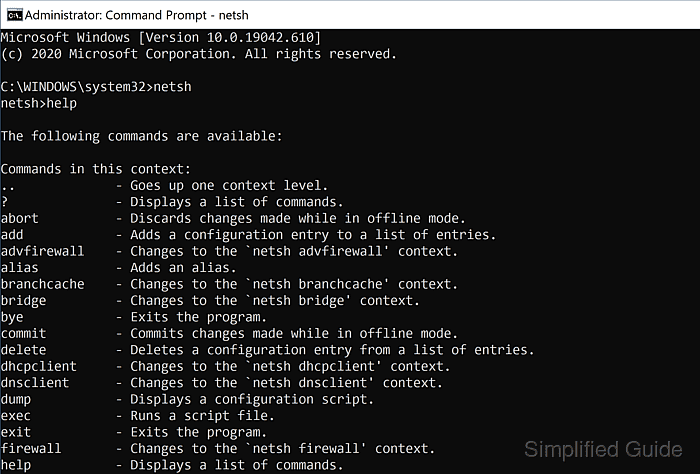Configuring the Windows firewall from the command line helps IT professionals streamline firewall management. It provides direct control over enabling or disabling the firewall, adjusting port configurations, and managing ICMP settings. This approach delivers consistent security policies across multiple environments.
Administration of related services is also possible with the netsh and sc commands, ensuring comprehensive control over Internet Connection Sharing (ICS), IPSec, and other essential components. Command-line operations allow these services to be started, stopped, or configured with precision, aligning network traffic rules with organizational requirements.

Advanced features, such as adjusting multicast broadcast responses, tuning desktop notifications, and activating firewall logging, are readily accessible from the command line. This method reduces configuration errors, supports efficient troubleshooting, and makes it easier to maintain secure network conditions.
Steps to configure Windows 11 firewall from command prompt:
- Disable Windows firewall using netsh.
netsh advfirewall set allprofiles state off
- Enable Windows firewall using netsh.
netsh advfirewall set allprofiles state on
- Allow specific ports through the firewall using netsh.
netsh advfirewall firewall add rule name="Allow Port 8080" protocol=TCP dir=in localport=8080 action=allow
- Block specific ports through the firewall using netsh.
netsh advfirewall firewall add rule name="Block Port 8080" protocol=TCP dir=in localport=8080 action=block
- Allow a program through the firewall using netsh.
netsh advfirewall firewall add rule name="Allow Program" dir=in action=allow program="C:\path\to\program.exe"
- Block a program through the firewall using netsh.
netsh advfirewall firewall add rule name="Block Program" dir=in action=block program="C:\path\to\program.exe"
- Disable ICMP echo request (ping) using netsh.
netsh advfirewall firewall add rule name="Block ICMPv4 In" protocol=icmpv4:8,any dir=in action=block
- Enable ICMP echo request (ping) using netsh.
netsh advfirewall firewall add rule name="Allow ICMPv4 In" protocol=icmpv4:8,any dir=in action=allow
- Disable multicast broadcast responses using netsh.
netsh advfirewall set multicastbroadcastresponse disable
- Enable multicast broadcast responses using netsh.
netsh advfirewall set multicastbroadcastresponse enable
- Disable desktop notifications for firewall actions using netsh.
netsh advfirewall set currentprofile firewallpolicy blockinbound,blockoutbound
- Enable desktop notifications for firewall actions using netsh.
netsh advfirewall set currentprofile firewallpolicy allowinbound,allowoutbound
- Enable remote desktop through the firewall using netsh.
netsh advfirewall firewall set rule group="remote desktop" new enable=Yes
- Disable remote desktop through the firewall using netsh.
netsh advfirewall firewall set rule group="remote desktop" new enable=No
- Enable firewall logging using netsh.
netsh advfirewall set currentprofile logging filename "C:\Windows\System32\LogFiles\Firewall\pfirewall.log" maxfilesize=4096
- Load IPSec backup configuration using netsh.
netsh -f C:\path\to\ipsec-backup.txt
- View current firewall configuration using netsh.
netsh advfirewall show allprofiles
- View the state of firewall rules using netsh.
netsh advfirewall firewall show rule name=all
- Start Internet Connection Sharing (ICS) service using sc.
sc start SharedAccess
- Stop Internet Connection Sharing (ICS) service using sc.
sc stop SharedAccess
- Set IPSec service to start automatically using sc.
sc config PolicyAgent start= auto
- Start IPSec service using sc.
sc start PolicyAgent
- Set Windows Defender service to start automatically using sc.
sc config WinDefend start= auto
- Start Windows Defender service using sc.
sc start WinDefend
- Restore default firewall settings using netsh.
netsh advfirewall reset
- Delete a specific firewall rule using netsh.
netsh advfirewall firewall delete rule name="Block Port 8080"
- Backup current firewall configuration using netsh.
netsh advfirewall export "C:\path\to\backup.wfw"
- Import a firewall configuration using netsh.
netsh advfirewall import "C:\path\to\backup.wfw"
- Allow inbound traffic on all ports for a specific IP using netsh.
netsh advfirewall firewall add rule name="Allow Inbound from Specific IP" dir=in action=allow remoteip=192.168.1.100
- Block outbound traffic on all ports for a specific IP using netsh.
netsh advfirewall firewall add rule name="Block Outbound to Specific IP" dir=out action=block remoteip=192.168.1.100
- Check the status of the firewall using netsh.
netsh advfirewall show allprofiles state

Mohd Shakir Zakaria is a cloud architect with deep roots in software development and open-source advocacy. Certified in AWS, Red Hat, VMware, ITIL, and Linux, he specializes in designing and managing robust cloud and on-premises infrastructures.
Comment anonymously. Login not required.
